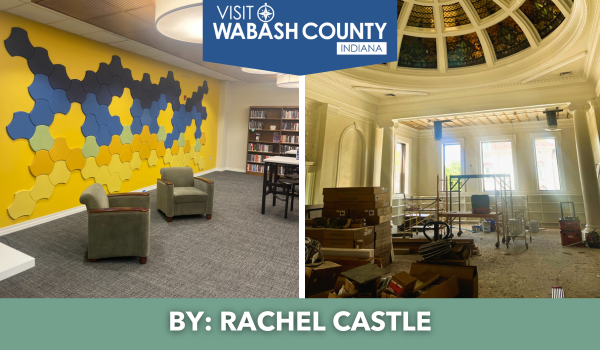The History of Boyd Park, Indiana’s First Roller Coaster
By: TJ Honeycutt
Everyone who currently calls Wabash County home has passed the site of Indiana’s first wooden roller coaster, most I suspect, without realizing it. Just across from Richvalley off of old 24 was Indiana’s first wooden roller coaster and a large amusement park. Today, “there’s more then corn in Indiana” immediately calls to mind memories of Monticello’s Indiana Beach. Most Hoosiers in this part of the state are familiar with that park, and it bears many striking resemblances to Boyd Park and what the park’s founders desired.

In 1900, Indiana’s population had the opposite problem of today’s urban concentration – almost everybody lived in rural settings outside of cities and most small towns. The steam railroad had come to nearly every town in the county, but they hardly ever stopped for passenger service. If one wanted to travel, by rail, from say Treaty to Fort Wayne or beyond, one’s options for travel accommodations were quite limited. A novel solution was proposed: a smaller, cheaper railroad, powered by electricity. The interurban would offer regular passenger service from rural outlying towns to the bigger cities while at the same time generating electricity and providing residential power for the first time. Government regulations were also far more relaxed at that time, and so despite Wabash, Indiana being home to the first municipal power operation (powering the lights atop the courthouse) these would all be strictly private businesses.


To drum up business and encourage regular travel the companies created parks that existed alongside their power generators and rail lines. They then offered excursion packages to these parks. Along the north bank of the Wabash River just across from Richvalley, Indiana, such a place was created – even the traction lines (which would have basically followed today’s old 24) were lined with ornamental trees to beautify the location.
The massive roller coaster, the first in the state, is the most bewildering to contemporary viewers, but there was a second roller coaster at Boyd Park that even took riders upside down! There were spinning swings, and all sorts of carnival games and amusements too. There was a large pavilion for concerts, dances, plays, and other performances. There were boat rentals and river tours, a hotel, and numerous small cabins and campsites. Ultimately, however, the interurban was not a long lived institution lasting only roughly thirty years. Financially, most of the companies were set up as pyramid schemes. The interurban was also not profitable, particularly after automobiles became commonplace.
In the end, Boyd Park would face competition from a similar park set up between Logansport and Peru. Additional pressure came from local residents who were incensed by some of the acts that various new owners had brought to Boyd Park. In time everything would be torn down, even many of the ornamental trees were uprooted and taken by the interurban’s receivers to try to pay its debts.



